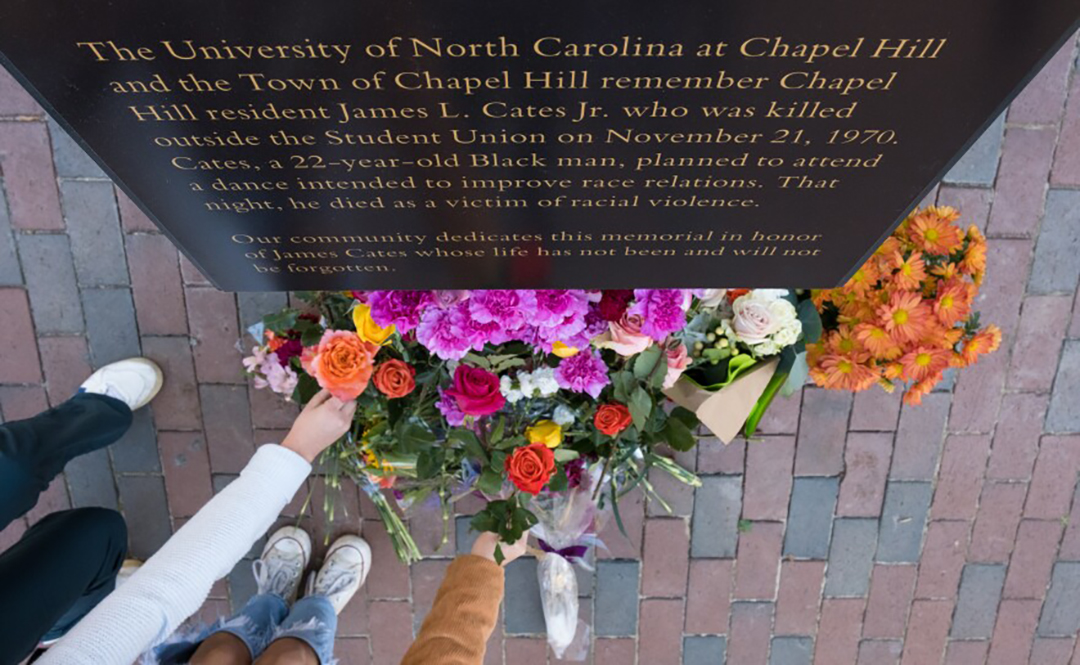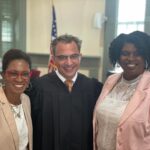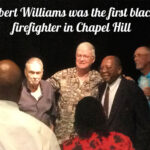Exactly 52 years to the day after James Lewis Cates, Jr. died on the campus of UNC-Chapel Hill, the university is dedicating a memorial to honor his life and acknowledge his death.
Then just 22 years-old, Cates — a Black man — was killed in 1970 in an act of racial violence after attending a dance party at the Student Union meant to improve race relations.
His cousin, Congresswoman-elect Valerie Foushee, spoke at the dedication ceremony.
“I am indeed humbled to represent a family and a community who are grateful to see this day,” Foushee said. “Although this is not a celebration, this is a commemoration.” Jim Cates was involved in student journalism and student government at Chapel Hill’s segregated Lincoln High, before attending a newly integrated Chapel Hill High.
Cates was one of many young people from the Chapel Hill’s primarily Black Northside neighborhood who attended the dance hosted by student organizations. Outside the Student Union, a fight broke out between members of a white motorcycle gang from Durham called the Storm Troopers and young people attending the dance. Cates was stabbed and bled to death on the brick pavement.
Witnesses say campus police did not try to get him to a doctor. The three white men charged with Cates’ murder were acquitted by an all-white jury in Orange County.
Cates died on the pavement in what students call The Pit. It’s a cultural hub on campus, where hundreds pass by every day, many without knowing that history.

In March 2022, the U.S. Department of Justice re-opened Cates’ case as part of a cold case initiative that investigates racially-motivated murders. The initiative was prompted by passage of the Emmett Till Unsolved Civil Rights Crime Act.
Although many Black Chapel Hill residents never forgot what happened to Cates, local journalist Mike Ogle helped resurface the story in broader public consciousness through his research and a viral Twitter thread.
Ogle says he never knew about Cates when he was a student at UNC-Chapel Hill. After researching Cates’ story, Ogle recalls asking attendees at an event at the Carolina Inn on campus if they had ever heard of James Cates.
Clark says it’s vital that students know the history of racial violence on campus, “which oftentimes is hidden under this very beautiful aesthetic that we have.”
“We really need to be able to face that head on, so we know how to move from it,” Clark said. “Now you cannot walk through this pit, which is the center of our campus, without seeing this memorial.”





